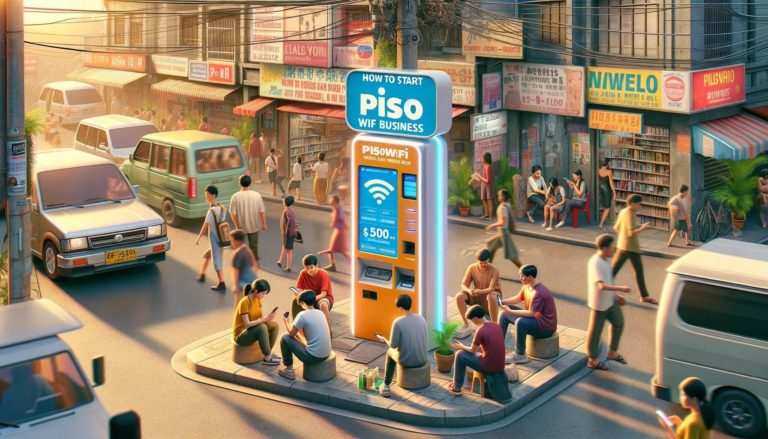How To Start A Samgyupsal Business Philippines

If you’re looking to venture into the food business in the Philippines, one industry that continues to gain popularity is samgyupsal. This Korean barbecue trend has taken the country by storm, with its mouthwatering grilled pork belly and unlimited side dishes. With a growing number of Filipinos craving for this unique dining experience, starting a samgyupsal business can be a lucrative venture. From the initial investment to the day-to-day operations, this article will provide you with valuable insights and real data to help you navigate through the world of samgyupsal business.
Market Analysis
Demographic Profile
Before starting a samgyupsal business, it’s essential to have a clear understanding of the target demographic. In the Philippines, samgyupsal has become increasingly popular among young adults and food enthusiasts. The target market typically consists of individuals aged 18 to 35, who are interested in experiencing Korean cuisine and enjoy dining out with friends or family.
Trends and Growth
Samgyupsal business has witnessed significant growth in recent years, largely due to the rise in popularity of Korean culture, particularly Korean dramas and K-pop. This has generated a strong interest in Korean cuisine, including the traditional dining experience of grilling meat at the table. The demand for samgyupsal has surged, leading to the establishment of numerous samgyupsal restaurants across the country.
The trend of “unlimited samgyupsal” has also gained traction, with customers being able to enjoy unlimited servings of pork belly and a variety of side dishes at a fixed price. This approach has appealed to consumers who seek value for their money while experiencing authentic Korean flavors.
Competitors Analysis
Before entering the samgyupsal business, it’s crucial to analyze the competition in the area. Identifying existing samgyupsal restaurants and assessing their strengths and weaknesses will help in developing a unique selling proposition and differentiating the new business. It’s essential to consider factors such as pricing, quality of ingredients, ambiance, customer service, and overall dining experience offered by competitors.
By conducting thorough market research and identifying gaps in the existing market, you can position your samgyupsal business effectively and attract customers who are looking for distinct offerings and experiences.
Location Selection
Accessibility and Foot Traffic
Selecting the right location is key to the success of a samgyupsal business. Ideally, the chosen location should be easily accessible to potential customers and have significant foot traffic. High foot traffic areas such as commercial districts, shopping centers, or near universities are prime locations for a samgyupsal restaurant.
Ensuring that your business is located in an area with a high concentration of your target demographic will increase the chances of attracting and retaining customers. Proximity to public transportation, parking facilities, and other amenities are also important factors to consider when choosing a location.
Competition in the Area
While it’s essential to select a location with high foot traffic, the presence of existing samgyupsal restaurants in the area should also be evaluated. Having competition nearby can be a positive sign, indicating that there is demand for samgyupsal in that particular area. However, it’s crucial to differentiate your offering and provide unique features or promotions to attract customers away from established competitors.
Conducting thorough market research and visiting potential locations can provide valuable insights into the market saturation and competitiveness of the area. This information will help in making an informed decision about the location of your samgyupsal business.
Business Plan
Concept and Theme
Developing a strong concept and theme for your samgyupsal business will help it stand out among competitors. Consider incorporating traditional Korean elements into the restaurant’s design and ambiance to create an immersive dining experience. You could focus on specific aspects of Korean culture, such as K-pop or Korean street food, to target a niche customer base.
Creating a unique selling proposition by offering distinctive features like premium quality meats, organic ingredients, or innovative vegetarian and vegan options can also set your samgyupsal business apart.
Target Market
Identifying and understanding your target market is crucial for developing a successful business plan. In the case of a samgyupsal business, the target market consists of young adults and food enthusiasts who enjoy exploring different cuisines and experiences. Conduct market research to determine the size and preferences of your target market, and tailor your offerings and marketing strategies to their tastes and interests.
Menu and Pricing
Designing a well-curated menu that caters to the preferences of your target market is essential. The menu should offer a variety of samgyupsal options, including different cuts of pork belly, marinated meats, and side dishes. Consider offering customizable options where customers can choose their preferred meats, sauces, and accompanying side dishes.
Pricing is a crucial aspect of your business plan. Research the market and determine a competitive price range, considering factors such as the quality of ingredients, portion sizes, and the overall dining experience offered. Offering various pricing tiers, including unlimited packages, can attract customers looking for value for their money while indulging in an authentic samgyupsal experience.
Marketing Strategy
A comprehensive marketing strategy is vital to promote your samgyupsal business and attract customers. Utilize various channels such as social media platforms, targeted online advertisements, food bloggers, and influencer collaborations to create awareness and generate buzz about your restaurant.
Engaging in online and offline promotions, organizing food tasting events, and partnering with delivery platforms can also help attract new customers. Developing a strong brand identity, through effective branding elements, signage, and unique restaurant aesthetics, will contribute to a memorable customer experience and increase brand loyalty.
Costs and Investments
Initial Investment
Starting a samgyupsal business requires a significant initial investment. Costs associated with securing a location, leasehold improvements, kitchen equipment, furniture, and licenses should be budgeted for. Additionally, inventory costs, initial marketing expenses, and staff recruitment and training expenses must be accounted for in the initial investment.
The total initial investment varies depending on the scale and location of the samgyupsal business but can range from P1,000,000 to P5,000,000 ($40,000 to $100,000).
Operational Costs
Maintaining and operating a samgyupsal business entails ongoing expenses that should be factored into your financial projections. Operational costs include rent, utilities, raw ingredients, kitchen supplies, marketing and advertising expenses, as well as salaries and benefits for staff.
It’s vital to keep track of these costs to ensure profitability and make necessary adjustments if required.
Staffing Costs
Hiring and retaining experienced and dedicated staff is crucial for the success of your samgyupsal business. Staffing costs include salaries, benefits, training, uniforms, and other related expenses. Consider the staffing requirements of your restaurant, such as chefs or cooks, servers, cashiers, and kitchen assistants, and budget accordingly.
Creating a positive work environment and offering competitive compensation packages can help attract and retain skilled employees, contributing to the overall success of your business.
Set-up and Design
Layout and Space Planning
Efficient space planning is essential in a samgyupsal restaurant to accommodate various dining setups and ensure smooth operations. The layout should optimize customer flow, allow for comfortable seating arrangements, and provide adequate space for grilling stations and kitchen equipment.
Consider separating dining areas for larger groups and individual customers. This can be achieved through private rooms or dividers, allowing customers to choose their preferred dining experience.
Furniture and Equipment
Investing in sturdy and comfortable furniture is crucial for creating a pleasant dining experience. Choose tables and chairs that can withstand the heat and smoke generated during grilling. The furniture should be easy to clean and maintain.
Samgyupsal-specific equipment, such as grills, exhaust systems, and ventilation, need to be installed to ensure a safe and efficient operation. Additionally, invest in a well-equipped kitchen with refrigeration units, food prep stations, and cooking equipment to meet the demands of the menu.
Interior Design
Create an inviting and aesthetically pleasing ambiance that reflects the concept and theme of your samgyupsal restaurant. Incorporate Korean-inspired elements through wall decor, lighting fixtures, and color schemes. Consider the use of natural materials such as wood and stone to evoke a warm and cozy atmosphere.
Create visually appealing displays for the side dishes, emphasizing freshness and quality. An attractive interior design will enhance the overall dining experience and leave a lasting impression on customers.
Licensing and Permits
Business Registration
Registering your samgyupsal business with the appropriate government agencies is a legal requirement in the Philippines. Consult with local authorities to determine the specific registration and licensing requirements for your area. This typically involves registering your business name, obtaining a business permit, and complying with tax obligations.
Health and Sanitary Permits
Ensuring compliance with health and sanitary regulations is crucial for operating a food establishment. Obtain the necessary permits, such as a sanitary permit from the local health department, to ensure that your restaurant meets the required hygiene standards. This may involve regular inspections and adherence to food safety protocols.
Fire Safety Certificate
Fire safety is a critical aspect of operating a samgyupsal restaurant. Comply with fire safety regulations by obtaining a fire safety certificate from the Bureau of Fire Protection. Install fire extinguishers, smoke detectors, and emergency exit signs as per the requirements to ensure the safety of your customers and staff.
Sourcing Suppliers
Meat Suppliers
Finding reliable and quality meat suppliers is vital for maintaining the authenticity and taste of your samgyupsal dishes. Look for suppliers that offer a wide range of pork belly cuts, including premium options. Conduct taste tests and negotiate prices and delivery terms to ensure consistency in the quality of meats.
Side Dish Suppliers
Side dishes, also known as banchan in Korean cuisine, are essential components of a samgyupsal dining experience. Look for suppliers that can provide a variety of freshly made side dishes, including kimchi, pickled vegetables, and dipping sauces. Quality and freshness are key factors to consider when choosing side dish suppliers.
Beverage Suppliers
Offering a selection of beverages that complement the flavors of samgyupsal is important. Collaborate with beverage suppliers that can provide a range of options such as traditional Korean drinks like soju and makgeolli, as well as soft drinks and non-alcoholic alternatives. Negotiate pricing and delivery terms to ensure a consistent supply of beverages.
Staff Recruitment and Training
Recruitment Process
Hiring the right staff is crucial for providing excellent service and maintaining the overall customer experience. Develop a comprehensive recruitment process that includes screening resumes, conducting interviews, and checking references. Look for individuals with a passion for food, strong customer service skills, and the ability to handle the demands of a fast-paced restaurant environment.
Training Programs
Invest in training programs to equip your staff with the necessary knowledge and skills to excel in their roles. Provide comprehensive training on the preparation and grilling of meats, serving etiquette, customer service, and food safety protocols. Continuous training programs can help improve staff performance, ensure consistency, and enhance the overall customer experience.
Staffing Requirements
Determine the staffing requirements of your samgyupsal restaurant based on the size of the establishment, anticipated foot traffic, and the menu offerings. Roles may include chefs or cooks, servers, cashiers, kitchen assistants, and cleaning staff. Assess the workload and create schedules that ensure adequate staffing during peak hours to provide efficient service to customers.
Operations Management
Opening Hours
Determining the operating hours of your samgyupsal business should take into account the preferences of your target market and the demand in the area. Consider extended hours on weekends and select days to cater to the late-night crowd or students with different schedules. It’s important to strike a balance between catering to customer needs and managing staff resources effectively.
Inventory Management
Efficient inventory management is crucial for minimizing waste, maintaining consistency, and meeting customer demands. Implement a point-of-sale system that allows for real-time tracking of inventory, ensuring that popular items are always in stock. Regularly review sales data and adjust your inventory levels accordingly to avoid excess or shortage of ingredients.
Quality Control
Maintaining high-quality standards is essential to the success of your samgyupsal business. Implement quality control processes to ensure consistency in the taste and presentation of your dishes. Regularly train and monitor staff to follow standardized recipes, cooking times, and portion sizes. Solicit customer feedback and conduct internal evaluations to continuously improve the overall quality of your offerings.
Customer Experience
Seating Arrangement
Create a comfortable and inviting seating arrangement that caters to different group sizes. Provide options for smaller tables for individuals or couples, as well as larger tables for bigger groups. Consider the appropriate spacing between tables to allow for a pleasant dining experience while maintaining privacy.
Service Standards
Exemplary customer service is crucial for fostering customer loyalty and positive word-of-mouth. Train your staff to provide attentive and personalized service, including explaining the menu, grilling meats at the table, and promptly attending to customer requests. Encourage staff to engage with customers, answer their questions, and offer recommendations to enhance their dining experience.
Ambience and Atmosphere
The ambience and atmosphere of your samgyupsal restaurant significantly contribute to the overall customer experience. Strike a balance between creating a comfortable and relaxed environment while incorporating vibrant and stylish elements inspired by Korean culture. Pay attention to lighting, music, and decor to create a welcoming and enjoyable atmosphere that transports customers to Korea while dining.
In conclusion, starting a samgyupsal business can be a profitable venture when approached with careful planning and execution. By conducting thorough market analysis, selecting an ideal location, developing a comprehensive business plan, and ensuring efficient operations, you can create a successful and memorable samgyupsal dining experience for your customers. Focus on delivering high-quality food, attentive service, and an immersive ambiance to stand out among competitors and establish a strong presence in the thriving market.






